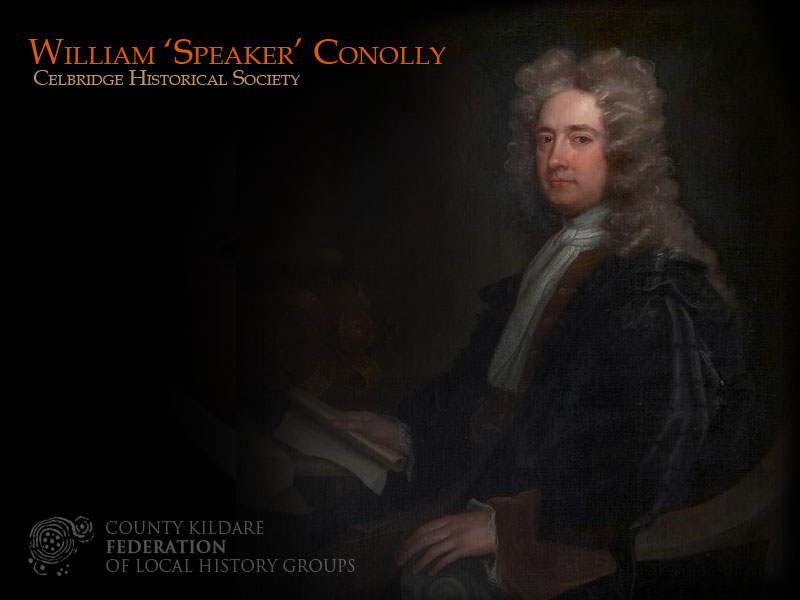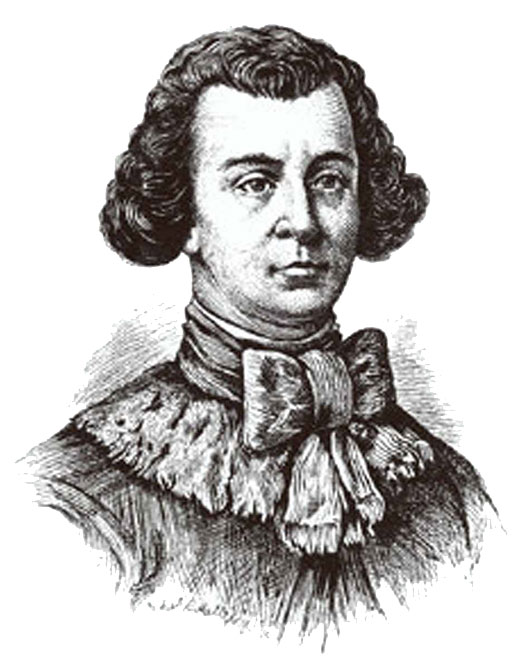William Conolly

The rise of William Conolly to become Ireland’s most influential and wealthiest native politician and administrator is one of the most intriguing stories of the turn of the 18th century.
William Conolly was born in 1662, the son of Patrick Conolly, from Ballyshannon, Co Donegal. The names of his brother (Patrick) and cousins (Hugh, Phelim and Thady) indicate the family had come from the Irish Catholic tradition, probably quite recently. Reputedly an innkeeper, Patrick Conolly had leased an extensive mill from John Folliott.
William qualified as an Attorney in 1685 and became attached to the Court of Common Pleas and soon inherited the wealth of two elderly ladies in Donegal that he had helped. Both William Conolly and his father were attainted by the Jacobite parliament of 1689, and their estates earmarked for forfeiture, sealing their allegiance to the Williamite cause.
In November 1688, William Conolly was one of the Protestants who fled Dublin to join the Williamites in Chester alongside his late Celbridge neighbour Bartholomew Van Homrigh.
On the victory of William III, he acquired a central role dealing in estates forfeited by supporters of James II, commencing his rise to fortune with the forfeited estates of the McDonnells of Antrim.
In 1691 he purchased Rodanstown outside Kilcock, which became his country residence until he purchased Castletown in 1709.
A dowry of £2,300 came his way in 1694 when he married Katherine Conyngham, daughter of Albert Conyngham, a Williamite General who had been killed in the war at Collooney in 1691.
He was appointed Collector and Receiver of Revenue for the towns of Derry and Coleraine on May 2nd 1698.
Conolly was the largest purchaser of forfeited estates in the period 1699–1703, acquiring also 20,000 acres spread over five counties at a cost of just £7,000. He was able to buy land at about £1 an acre and without any major capital commitments, thanks to the backing of London banker Alexander Cairns and skilful use of debentures to cover up to two thirds of the prices he was paying. His rise was not without controversy. There was an investigation in 1700 into the rapid acquisition of vast tracts of land which he answered. After his death the inscription on the elaborate marble tomb which Catherine erected at Kildrought Tea Lane church was careful to stress his honesty (translated from the Latin): “He made a modest though splendid use of the great riches he had honestly acquired.”
His largest single purchase was in 1703, when he acquired 10,000 acres forfeited by the Plunketts, Nugents and Itchinghams in Meath, Westmeath and Kildare.
He purchased a town house on Capel Street in Dublin in 1707 where he lived “in commanding elegance, his brilliant vermilion and gold State coach adding distinction to the neighbourhood”.
Among his neighbours on Capel Street was upholsterer Robert Baillie, who was to become his agent in the new town of Celbridge after 1709 and the first occupant of Kildrought House. Baillie was responsible for the tapestries of William of Orange that still adorn the Bank of Ireland building on College Green.
William Conolly’s purchase of Celbridge in 1709 cleared the way for his construction of Ireland’s largest private house in Castletown and redeveloping the allegedly decayed village of Kildrought, which he renamed Cell-bridge in 1714.

Details of the transaction were set out in an elaborate agreement with Thomas Dongan. Conolly deprecated Dongan’s tenants as beggars and set out to build a new main street with new tenants.
Conolly’s reputation as a deal maker helped secure the most important position in Irish politics, Speaker of the Irish House of Commons in 1715.
Conolly dominated Irish politics in the period 1715–29, holding the posts of speaker of the House of Commons, chief revenue commissioner, and lord justice, often simultaneously, and gaining near complete control over parliamentary affairs.
William Conolly showed a skill and capacity to stay on terms with different administrations, and retain the trust of the London administration as their most trusted parliamentary manager. He also oversaw the construction of a new Parliament House in College Green, at 43,560 square feet it was almost as elaborate as his home in Castletown and the first purpose built two chamber parliament building in the world.
He further expanded his interests in Kildare when he paid John White £11,883 for the manor town and lands of Leixlip, Newtown and Stacumny.
Castletown was not completed when he died “of the Apoplexy” (stroke) at his house on Dublin’s Capel Street on 30th October 1729. His estimated income of £17,000 a year at his death meant he was the wealthiest man in Ireland.
